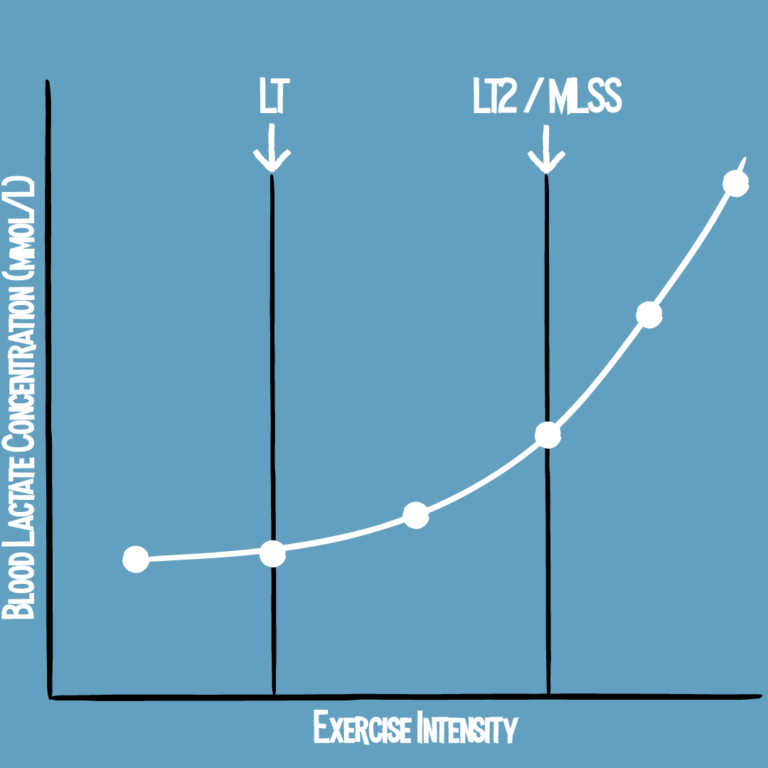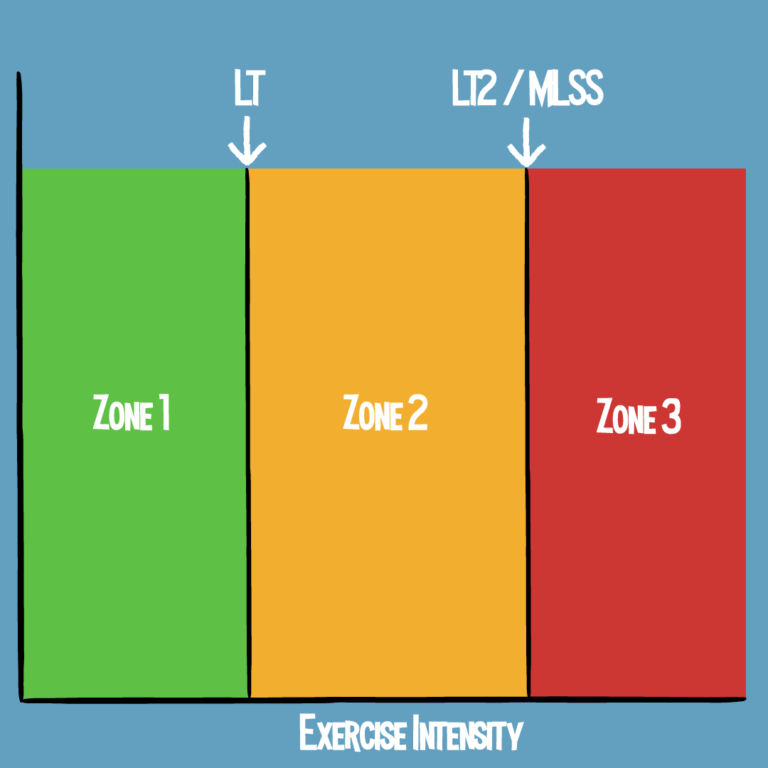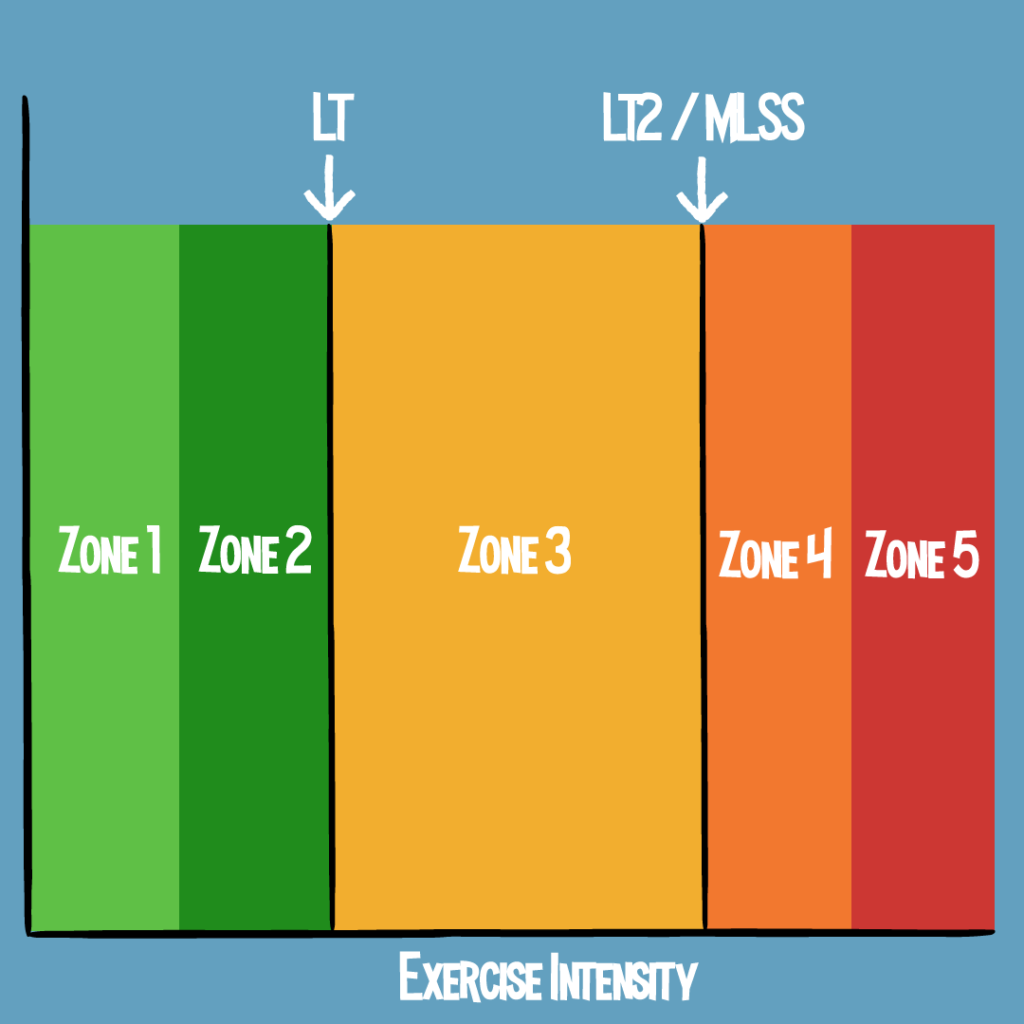TLDR: Lactate threshold and maximal lactate steady state are important markers in endurance training, indicating the exercise intensity where lactate begins to accumulate faster than it’s cleared. Performing lactate threshold testing, either in a lab or through field methods helps define personalised training zones, optimise pacing strategies, and monitor progress. While elite athletes might benefit from frequent lactate monitoring, for most, understanding and applying these concepts can enhance training effectiveness without the need for constant testing.
In Part 1 of this series, we explored the misunderstood nature of lactate, debunking the myth of lactate as merely a waste product and highlighting its role as a source of energy source and a catalyst for performance adaptations. Now, in Part 2, we shift our focus to how lactate thresholds and lactate threshold testing. What are they, how are they measured and do you need to measure yours to get the most out of your training? Let’s start by defining two important physiological measurements, the lactate threshold and maximal lactate steady state.
You may have heard the term lactate threshold thrown around, or had training partners discuss lactate threshold testing, but what does it actually mean and why is it relevant to performance? You always have some lactate in your blood, as you’re scrolling through this article your levels will likely be somewhere between 0.5 to 1.5 mmol/l. The lactate threshold represents the exercise intensity at which lactate starts to accumulate in the bloodstream faster than it can be cleared. Typically, athletes with a higher lactate threshold can sustain higher intensities for longer periods, giving them a competitive edge.
Maximal Lactate Steady State (MLSS) is known by several different terms in sports science and endurance training literature. These terms, while sometimes used interchangeably, can have slightly different definitions depending on the context and specific methodologies used. For example most cyclists will be familiar with the functional threshold power or FTP test, while this is not exactly the same as MLSS, it is a field based test (although some would argue not a very good one) that is designed to predict MLSS. Other common terms for the MLSS are anaerobic threshold, critical power, lactate threshold 2 (LT2), and the onset of blood lactate accumulation (OBLA).
The Maximal Lactate Steady State (MLSS) is defined as the highest exercise intensity at which lactate production and clearance are balanced, allowing lactate concentration to remain relatively stable during prolonged exercise. Essentially, at this intensity lactate is notably elevated but the accumulation does not continue to rise, indicating a steady state of lactate metabolism.

Typical Lactate Curve Observed During a Lactate Threshold Test
Determining your lactate threshold and MLSS can be done through laboratory lactate threshold tests or estimated using field methods. In a lab setting, athletes undergo incremental exercise tests where blood lactate levels are measured at various intensities. This can also be mimicked in the field using portable lactate monitors.
For those without access to lab testing, field tests can provide a reasonable estimate. These usually include performing some form of time trial and entering the result into a mathematical equation. I will cover all these different tests and how valid they are in part 3 of the series.
After testing an athlete will typically be provided with heart rate data for each threshold which will help them to translate the information in their training using a more accessible measure. They will also be provided with the power or pace outcomes at each threshold which can help to inform race pacing strategies.
If you’re reading this article the chances are you’re probably somewhat interested in endurance sport. With that you have probably heard of training zones, whether it be someone saying you need to so more zone 2 training or arguments over polarised vs pyramidal training models. Lactate threshold testing is a powerful tool for defining training zones. These zones guide training intensity to target specific physiological adaptations, from building aerobic capacity to enhancing lactate clearance. The most commonly used models for training zones are the three and five zone models.

The 3-Zone Training Model
The three zone model is uses the lactate threshold and MLSS to differentiate the zones. The 5 zone model on the other hand splits the first and third zones up into two separate categories. This isn’t really based on any key physiological landmarks. This doesn’t necessary make the 5-zone model wrong or worse, there are some potential uses to splitting it this way. For example if a coach really wanted an athlete to dial down their intensity and rest while keeping active they could prescribe some zone 1 work which is going to keep things really light and far away from the more intense zones. The important things for you as an athlete is understanding what model a training programme is referring to and having an idea of the intensity that is being asked of you in any given session or interval. How much time an athlete spends training in each zone will vary depending on a host of factors including goals, fitness levels, hours of training per week, race proximity and injury history.

The 5-Zone Training Model
Regular lactate threshold testing allows athletes and coaches to assess training effectiveness over time. By monitoring shifts in lactate thresholds, they can gauge improvements in endurance capacity. For instance, if an athlete’s LT1 or MLSS shifts to a higher pace or power output, it indicates enhanced endurance performance. So what we want to observe is the lactate curve we saw earlier moving to the right meaning an athlete can produce more force relative to the lactate that is accumulating. This data-driven approach helps refine training plans and track progress, ensuring that adaptations are occurring as expected.
Lactate threshold testing has been a cornerstone of exercise physiology for a long time buts its typically been used as a way of testing where someone is at and then monitoring progress over time, whether that be in marathon runners, swimmers, triathletes or premier league football players. More recently though there has been a trend towards measuring lactate during training sessions, popularised by the “Norwegian Method” and in particular coach Olav Aleksander Bu. The principles that make up the Norwegian Method actually go far beyond just lactate testing, to more cultural and holistic principles designed to promote performance, but a lot of popular media just focuses on just this one isolated aspect, but I digress.
Its argued that by incorporating lactate testing into training sessions this allows for precise control of intensity, ensuring that athletes stay within their desired training zones. This MIGHT be useful for the elite athlete who has years of training under their belt, is already doing everything else right and is looking squeeze every last drop out of their training. But what about your everyday endurance athlete, age grouper or someone just looking to get into sport? This style of training requires access to a lactate analyser and testing strips, the cost of which can add up quickly. Testing can be time-consuming and may interrupt the flow of a training session. You need to be able to interpret the outputs, which is not always easy. Finally, and this is the most important factor in my opinion. Measuring lactate is one more bit of data, one more thing to measure which can distract you from what really matters for endurance performance. Consistent training over time. Building up mileage all whilst enjoying yourself and keeping injuries at bay as much as possible. These fundamentals will take you so far in your sport. The rise of wearable devices means that athletes now have access to a wealth of real-time information, which may soon include lactate levels. While this data can be useful for fine-tuning training, it’s important not to become overwhelmed or distracted by every metric. Ultimately, consistency over time remains the most crucial factor in achieving long-term progress and success in endurance sport.
Continuous lactate monitoring technology is coming, its already been developed and apparently there are lots of patents pending for this technology. These devices, worn like the ever more popular glucose monitor, provide real-time data on lactate concentrations during training and competition.
As I have said above there might be some useful applications for these devices, for the right people, with the right support under the right conditions. I imagine the major issue with these devices will be that wearable companies have a history of putting marketing before science, attempting to sell you something you probably don’t need all in the name of “personalisation”. For a lot of people these devices will simply be an unnecessary expense or another poorly understood metric to flex on Strava.
Measuring lactate can be a useful tool for establishing training zones, monitoring progress and developing race plans. If you have access to testing, great. If you do test make sure you have the support of an expert who can ensure the testing protocol is designed and delivered properly and the data is interpreted correctly. If you don’t have access to testing don’t worry its certainly not essential, many people have gotten very far in endurance sport without a single test. Lactate testing is not a prerequisite for performance or enjoyment. If you don’t have access to testing, but want to use some scientific principles to help guide your training, then stay tuned for the next part in series where I will cover some field based tests you can use to get a similar insight into your physiology.

Paul is a sports nutrition consultant and educator with a PhD in Nutrition and Exercise Science. With over a decade of experience, Paul specialises in optimising performance and recovery for endurance athletes through evidence-based strategies. As a lecturer and researcher, Paul has published in peer-reviewed journals and worked with athletes, sports teams, and organisations to achieve peak performance.
